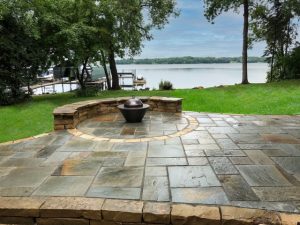It is no secret. Minneapolis is cold. If you are a resident here, you are no stranger to icicles. Icicles hanging from your roof may make your house look pretty, but they may also indicate the presence of ice dams. Ice dams are a damaging winter roofing problem caused by poor ventilation and a warm attic. Left untreated, ice dams can cause serious damage to your roof, gutters, paint, insulation, drywall, and can even lead to mold.
How To Prevent Ice Dams
What causes ice dams?
Ice dams form when melting snow runs off and refreezes at the edge of a roof. Warmth from the roof melts the snow that sits directly on top of it, causing water to flow between the roof and the outermost layers of snow. This water then re-freezes and turns to ice when it hits a cold unheated roof edge or gutter. As the snow touching the roof continues to melt, water continues to flow down the roof surface until it hits the ice, thereby creating a larger and larger ice dam.
Despite freezing temperatures outside, the underside of the roof in the attic is warm enough that it heats the outside roof to the point that snow melts. Ironically, the potential for ice dams gets worse after a big snowstorm. Snow is a great insulator so the surface of a roof can warm up more quickly from the warm attic space, thereby melting the snow faster.
Why are ice dams bad?
If this situation continues, the ice can work its way back up the roof edge, get under shingles, melt and leak into the exterior wall, home or attic. Damage from ice dams may not be readily apparent. As the ice melts and possibly drips into the wall or attic, insulation can be become wet and lose its ability to perform. In some cases if the right temperature and humidity exist, mold may begin to grow in the attic. Often paint will peel or blister weeks or months after the ice dam has melted as moisture from the leak in the wall or ceiling cavities tries to leave and pushes outward.
How to prevent damage from ice dams.
The most effective and sustainable way to prevent ice dams is to eliminate any sources of heat in the attic, and ventilate the attic as much as possible. To prevent ice dams from forming, the underside of the roof deck must be close to the temperature of the exterior side of the roof. Eliminate any factors that could be adding heat to your attic such as improper insulation, furnace or water heating equipment in the attic, or heating ducts or fans venting into the attic.
Act Now
If you find yourself battling an ice dam in the winter, act as quickly as possible to prevent any damage to your house. Do not attempt to hack away at an ice dam with a chisel or shovel. This can be dangerous for you and for your roof. One tool you can try is a roof rake. Roof rakes offer a safe way to remove large amounts of snow from a roof to prevent ice dams from forming or getting worse. If you already have an ice dam beginning to form, you can try using a calcium chloride product to melt the ice.
Finally, if you are in a really sticky situation, you can call a professional ice dam removal service. While this may be a more expensive option, taking the preventative step of removing the dam before it causes any damage to your house can save you money in the long run.
➤ Click here to learn about the ice dam removal services offered by Dean Bjorkstrand

